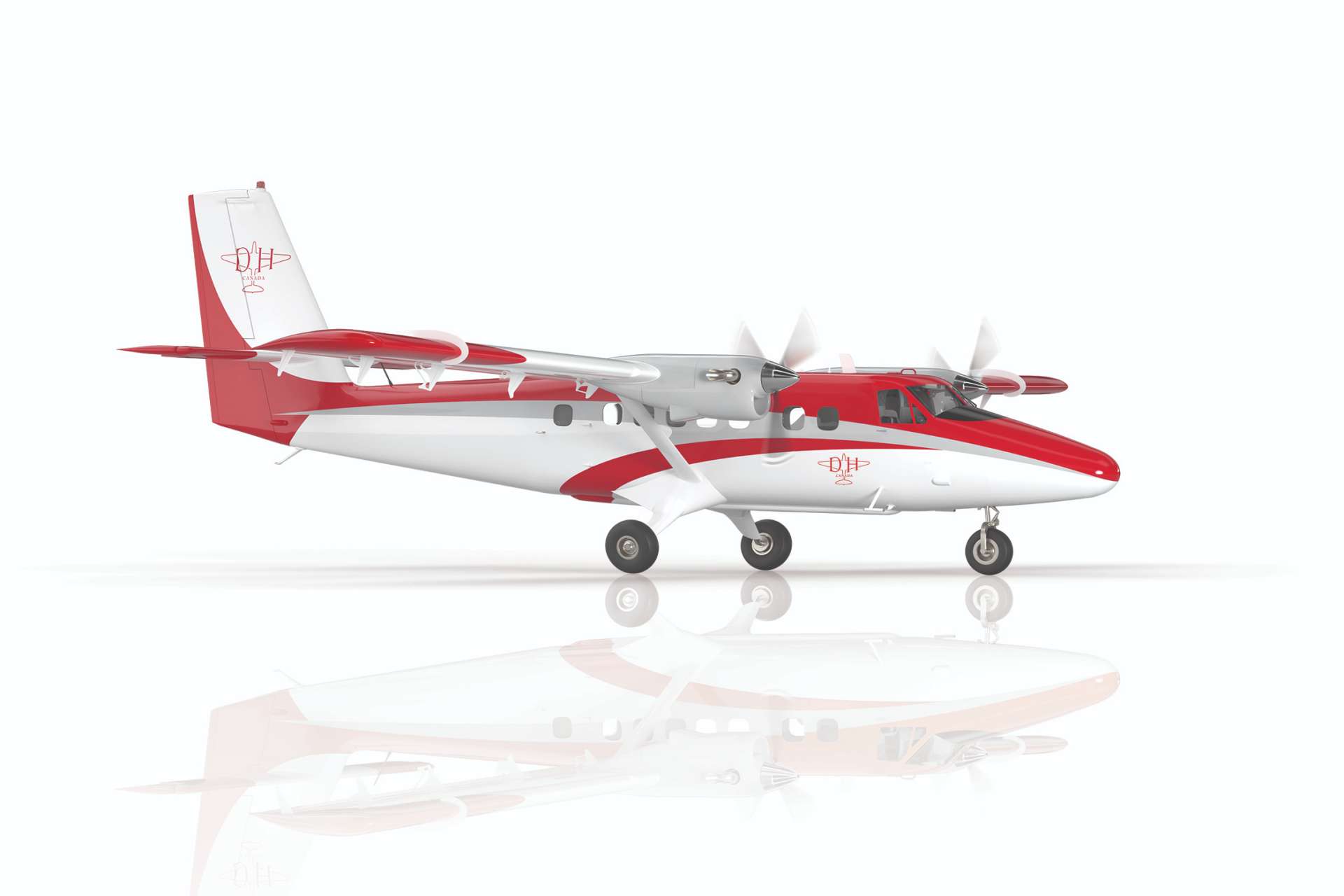Colombia Signs Agreement to Acquire New De Havilland Aircraft DHC-6 Twin Otter Aircraft

{loadposition bannertop}
{loadposition sidebarpub}
At the Farnborough Airshow 2024, the Colombian Air Force announced the signing of an agreement with De Havilland Aircraft of Canada Limited for the acquisition of eight new DHC-6 Twin Otter aircraft. These planes are intended to strengthen the fleet of the National Air Service (SATENA), with the first deliveries scheduled for the end of 2024.Follow Army Recognition on Google News at this link
De Havilland DHC-6 Twin Otter aircraft (Picture source: De Havilland)
This strategic investment aims to improve the connectivity of Colombia’s hard-to-reach regions by increasing the availability of air transport means. The increased capacity will also allow for the opening of new air routes, thus supporting the long-term growth strategy of the Colombian Air Force for the next 50 years.
General Óscar Zuluaga Castaño, president of SATENA, expressed his enthusiasm: “The De Havilland Canada Twin Otter, with its modern cabin, robust structure, and proven reliability, is the right addition to our fleet. It will support our mission to exceed expectations, expand our routes, and reach new destinations.” He added that “SATENA’s exceptional air service, combined with the DHC-6 aircraft, will be the catalyst to ensure mobility, growth, and access to the most remote regions of Colombia.”
From De Havilland Canada’s side, Ryan DeBrusk, vice president of sales and marketing, stated: “We are excited and proud that SATENA has chosen the Twin Otter to serve the expanding South American market, and we look forward to working with them.” He highlighted that “The DHC-6 Twin Otter stands out as the most versatile aircraft in its class due to its modern avionics and robust structure. Its integration into the SATENA network will provide the flexibility and reliability needed to meet the growing demand for air services throughout Colombia.”
Currently, SATENA operates ATR 42, ATR 72, and Embraer ERJ-145 aircraft. The DHC-6, with lower capacity and range than the planes currently in service, stands out for its versatility, being capable of performing commercial passenger transport operations as well as aeromedical evacuation missions thanks to its Short Take Off and Landing (STOL) capability.
The DHC-6 Twin Otter is a twin-engine turboprop aircraft designed for a wide variety of missions. With a capacity of 19 passengers, it is equipped with two Pratt & Whitney PT6A-34 engines, each providing 620 horsepower. Its robust structure and STOL (Short Take Off and Landing) capabilities allow it to take off and land on short and unprepared runways, making it ideal for operations in remote and hard-to-reach areas.
In terms of performance, the Twin Otter features a cruising speed of 278 km/h and a range of 1,400 km, with a maximum payload of 2,948 kg. The aircraft is also equipped with modern avionics, including an advanced GPS navigation system and an autopilot, enhancing the safety and efficiency of missions. Thanks to its versatility and reliability, the DHC-6 is used worldwide for various missions, ranging from passenger transport to medical evacuation, and even search and rescue operations.

{loadposition bannertop}
{loadposition sidebarpub}
At the Farnborough Airshow 2024, the Colombian Air Force announced the signing of an agreement with De Havilland Aircraft of Canada Limited for the acquisition of eight new DHC-6 Twin Otter aircraft. These planes are intended to strengthen the fleet of the National Air Service (SATENA), with the first deliveries scheduled for the end of 2024.
Follow Army Recognition on Google News at this link
De Havilland DHC-6 Twin Otter aircraft (Picture source: De Havilland)
This strategic investment aims to improve the connectivity of Colombia’s hard-to-reach regions by increasing the availability of air transport means. The increased capacity will also allow for the opening of new air routes, thus supporting the long-term growth strategy of the Colombian Air Force for the next 50 years.
General Óscar Zuluaga Castaño, president of SATENA, expressed his enthusiasm: “The De Havilland Canada Twin Otter, with its modern cabin, robust structure, and proven reliability, is the right addition to our fleet. It will support our mission to exceed expectations, expand our routes, and reach new destinations.” He added that “SATENA’s exceptional air service, combined with the DHC-6 aircraft, will be the catalyst to ensure mobility, growth, and access to the most remote regions of Colombia.”
From De Havilland Canada’s side, Ryan DeBrusk, vice president of sales and marketing, stated: “We are excited and proud that SATENA has chosen the Twin Otter to serve the expanding South American market, and we look forward to working with them.” He highlighted that “The DHC-6 Twin Otter stands out as the most versatile aircraft in its class due to its modern avionics and robust structure. Its integration into the SATENA network will provide the flexibility and reliability needed to meet the growing demand for air services throughout Colombia.”
Currently, SATENA operates ATR 42, ATR 72, and Embraer ERJ-145 aircraft. The DHC-6, with lower capacity and range than the planes currently in service, stands out for its versatility, being capable of performing commercial passenger transport operations as well as aeromedical evacuation missions thanks to its Short Take Off and Landing (STOL) capability.
The DHC-6 Twin Otter is a twin-engine turboprop aircraft designed for a wide variety of missions. With a capacity of 19 passengers, it is equipped with two Pratt & Whitney PT6A-34 engines, each providing 620 horsepower. Its robust structure and STOL (Short Take Off and Landing) capabilities allow it to take off and land on short and unprepared runways, making it ideal for operations in remote and hard-to-reach areas.
In terms of performance, the Twin Otter features a cruising speed of 278 km/h and a range of 1,400 km, with a maximum payload of 2,948 kg. The aircraft is also equipped with modern avionics, including an advanced GPS navigation system and an autopilot, enhancing the safety and efficiency of missions. Thanks to its versatility and reliability, the DHC-6 is used worldwide for various missions, ranging from passenger transport to medical evacuation, and even search and rescue operations.




